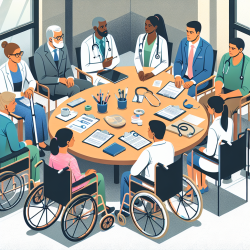Introduction
In the United States, the challenges faced by individuals reentering society after incarceration are multifaceted, especially for those with HIV and substance use disorders (SUD). The research article "Patient, Medical and Legal Perspectives on Reentry: The Need for a Low-Barrier, Collaborative, Patient-Centered Approach" sheds light on these challenges and suggests a comprehensive strategy to improve outcomes for this vulnerable population.
Key Findings
The study conducted qualitative interviews with 15 stakeholders, including patients/clients, medical providers, and legal representatives. The findings highlighted three major themes:
- Psychosocial vs. Logistical Barriers: Patients emphasized the importance of psychosocial support and individual attitude, while medical and legal participants focused on logistical factors such as finances, housing, and transportation.
- Competing Priorities: Patients expressed both medical and legal needs, whereas medical providers and legal entities often limited their concerns to their respective scopes of work.
- Collaborative Approach: All participant groups underscored the need for a low-barrier, collaborative, patient-centered approach to reentry, aiming for self-sufficiency.
Implications for Practitioners
For practitioners, especially those in speech-language pathology and related fields, these findings offer valuable insights:
- Adopt a Holistic Approach: Recognize the importance of addressing both psychosocial and logistical barriers. This involves understanding the client's environment, support systems, and individual challenges.
- Foster Collaboration: Engage with medical and legal professionals to create a comprehensive support network. This ensures that clients receive consistent and coordinated care.
- Utilize Community Health Workers: Incorporating community health workers can bridge gaps in care, providing advocacy and support to clients navigating reentry challenges.
Encouraging Further Research
The study highlights the need for continued research into multidisciplinary approaches to reentry. Practitioners are encouraged to explore how their specific expertise can contribute to a collaborative framework, enhancing outcomes for individuals reentering society.
Conclusion
Implementing a patient-centered, collaborative approach to reentry can significantly improve outcomes for individuals with complex medical and legal needs. By addressing both psychosocial and logistical barriers, practitioners can play a crucial role in supporting successful reentry and reducing recidivism.
To read the original research paper, please follow this link: Patient, medical and legal perspectives on reentry: the need for a low-barrier, collaborative, patient-centered approach.










